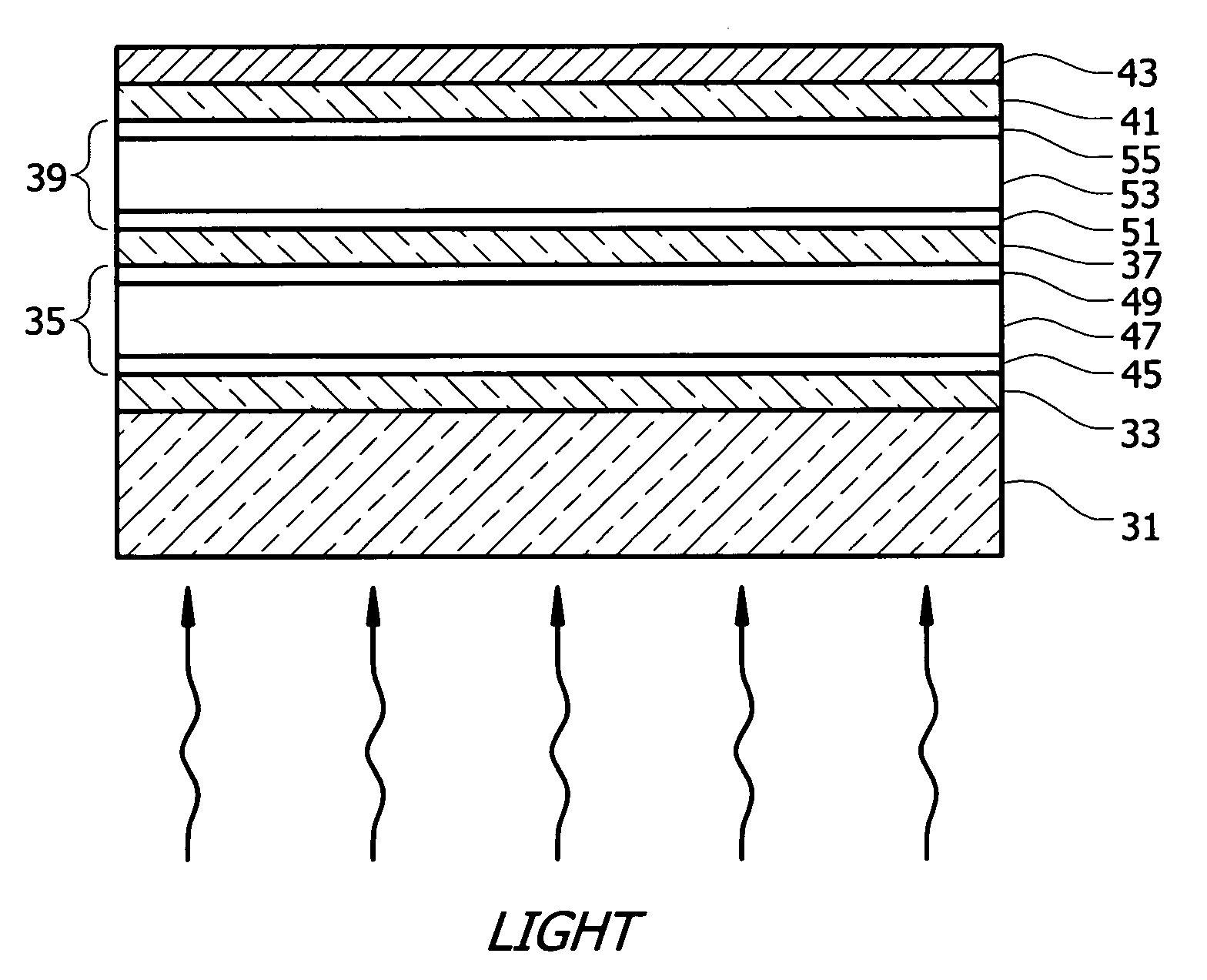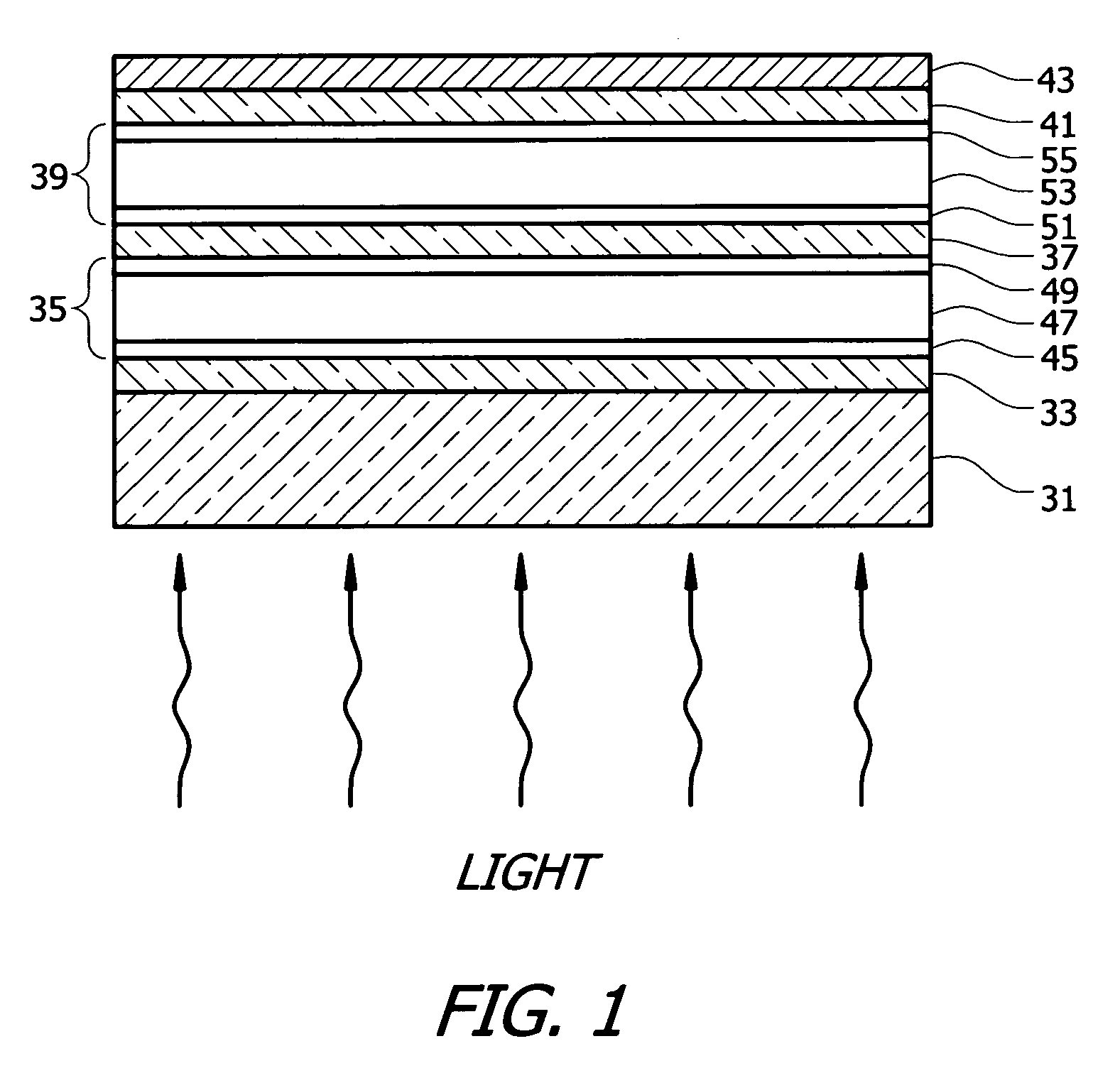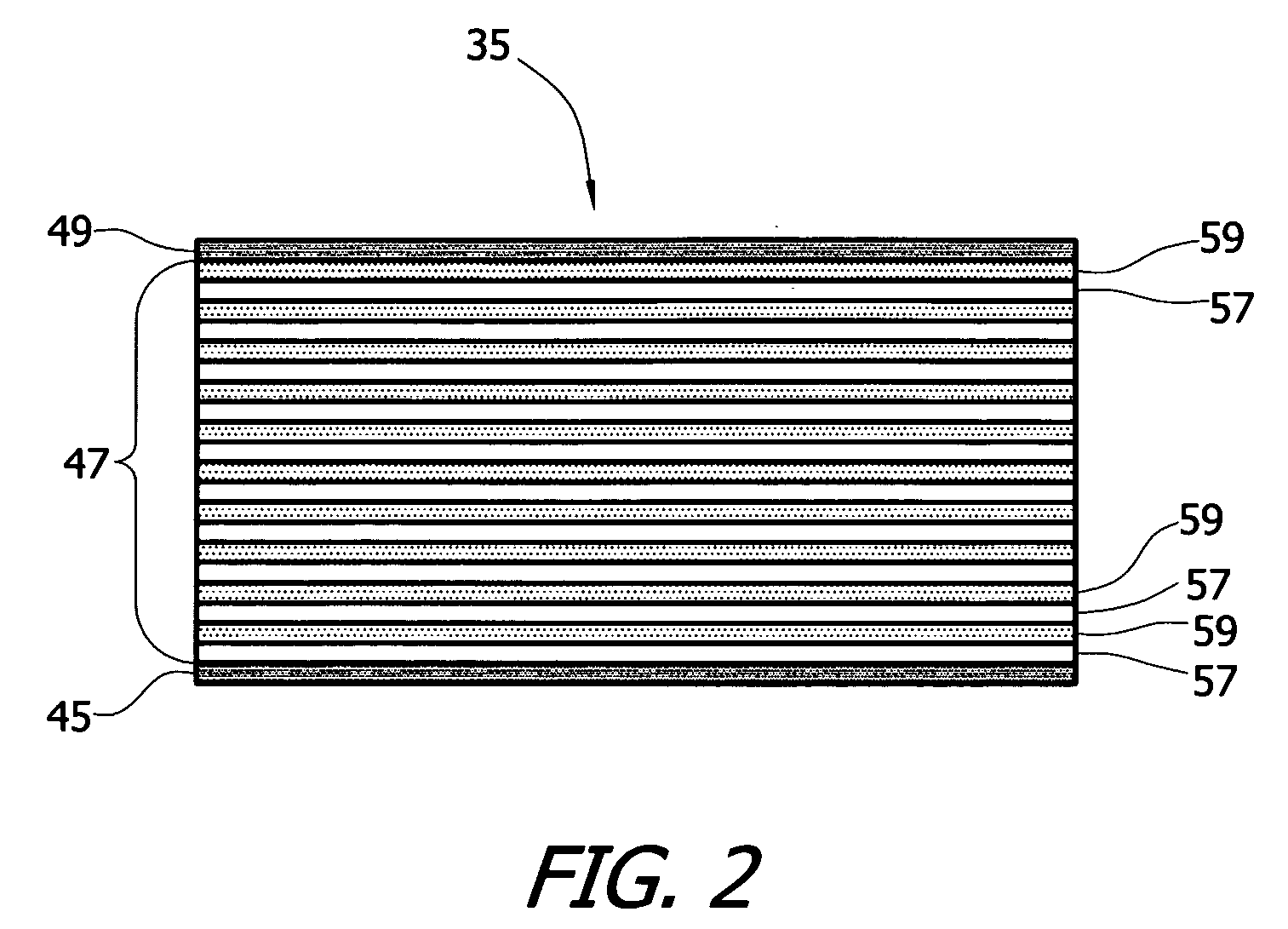Multiple junction photovolatic devices and process for making the same
a photovolatic device and multi-junction technology, applied in the field of photovoltaic devices, can solve the problems of difficult photovoltaic devices, low conversion efficiency of conventional a-si:h based cells, and inability to properly absorb the radiant energy of the ultra violet and blue part of the solar spectrum, and achieve the effect of high-rate chemical vapor deposition process
- Summary
- Abstract
- Description
- Claims
- Application Information
AI Technical Summary
Benefits of technology
Problems solved by technology
Method used
Image
Examples
Embodiment Construction
[0022]The present invention overcomes the inability of the conventional single junction photovoltaic device to effectively utilize the entire solar spectrum by the spectrum splitting or multiple band gap approach, in which multiple cells having different band gap energies are arranged in a tandem configuration to effectively absorb photons from a wider range of the solar spectrum.
[0023]The present invention as applied to a double junction photovoltaic device having two photoelectric conversion cells arranged in a tandem configuration will now be described with reference to FIG. 1. Referring now to FIG. 1, the illustrated device has an optically transparent dielectric substrate 31, through which radiant energy or sunlight enters the device; a layer of a textured transparent front contact 33 formed of a transparent conductive oxide (TCO) material disposed on the substrate 31; a first photoelectric conversion cell 35 having a band gap energy in the range of about 1.6 eV to about 1.9 eV...
PUM
 Login to View More
Login to View More Abstract
Description
Claims
Application Information
 Login to View More
Login to View More - R&D
- Intellectual Property
- Life Sciences
- Materials
- Tech Scout
- Unparalleled Data Quality
- Higher Quality Content
- 60% Fewer Hallucinations
Browse by: Latest US Patents, China's latest patents, Technical Efficacy Thesaurus, Application Domain, Technology Topic, Popular Technical Reports.
© 2025 PatSnap. All rights reserved.Legal|Privacy policy|Modern Slavery Act Transparency Statement|Sitemap|About US| Contact US: help@patsnap.com



